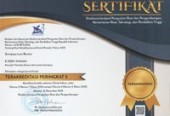The Use of Physical Strength in Children’s Education: Learning from Indonesian Court’s Judgments
Abstract
This article explores the limitations of using physical force in educating children in Indonesia. It examines the prevalence of violence by parents and teachers in education. Increased public awareness and concern for children's rights have made the use of violence in education a taboo. This research uses a qualitative method with secondary data using literature and analysing court decisions from the human rights perspective. This study aims to determine the limits of tolerance for violence and corporal punishment. The court decisions have been taken as the data to be analysed from various locations where decisions have been issued were taken into consideration to depict the similarities and differences in deciding matters related to corporal punishment towards children. This article examines historical, cultural, and religious factors that influence the use of physical force, including interpretations of Islamic teachings. This paper also presents arguments for and against corporal punishment as an educational tool. This research sheds light on the complexities surrounding the permissibility of physical force in children's education and the conflicting views in society, providing insight into evolving understandings and legal perspectives on the subject.
Keywords
Full Text:
PDFReferences
REFERENCES
Antara. “Selama Tahun 2022 Guru Menjadi Pelaku Kekerasan Terbanyak Di Sekolah.” Accessed June 10, 2023. https://edukasi.okezone.com/read/2023/01/01/624/2738113/selama-tahun-2022-guru-menjadi-pelaku-kekerasan-terbanyak-di-sekolah.
Bemmelen, J. M. van. Hukum Pidana 1: Hukum Pidana Material Bagian Umum [Ons Strafrecht 1: Het Materiele Strafrecht Algemeen Deel]. 2nd ed. Bandung: Binacipta, 1987.
Chan, Wing Cheong. “Corporal Punishment of Children by Parents: Is It Discipline or Violence and Abuse?” Singapore Academy of Law Journal, 2018, 546.
Coleman, Doriane Lambelet. “Where and How To Draw The Line Between Reasonable Corporal Punishment And Abuse.” Law and Contemporary Problems 73, no. 107 (2010): 130–35.
Creswell, John W. Research Design: Qualitative, Quantitative, and Mixed Methods Approach. Los Angeles: SAGE Publications, 2017.
Dietz, Tracy L. “Disciplining Children: Characteristics Associated With The Use of Corporal Punishment,” Child Abuse & Neglect.” Sciencedirect 24, no. 12 (2000): 1531.
Gershoff, Elizabeth Thompson. “Corporal Punishment by Parents and Associated Child Behaviors and Experiences: A Meta-Analytic and Theoretical Review.” Psychological Bulletin 128, no. 4 (2002): 539–79. https://doi.org/DOI: 10.1037//0033-2909.128.4.539.
Maslan, and Rizal. “Duka-Nasional-Kematian-Bocah-Arie-Hanggara.” Accessed May 11, 2023. https://news.detik.com/x/detail/intermeso/20220317/Duka-Nasional-Kematian-Bocah-Arie-Hanggara.
Maya Damayanti, and Efriyani Djuwita. “Pengaruh Pengalaman Hukuman Fisik Dan Jenis Kelamin Terhadap Mitos Dan Intensi Penggunaan Hukuman Fisik Pada Remaja.” Jurnal Ilmu Keluarga Dan Konseling 14, no. 1 (2021): 65.
Muqaddima, and Ahmadie Thaha. Ibn Khaldun. Jakarta: Pustaka Firdaus, 1896.
Nations, United. “General Comment No. 8 (2006): The Right of the Child to Protection from Corporal Punishment and Other Cruel or Degrading Forms of Punishment.” UN Committee on the Rights of the Child (CRC), 2007.
Petryszak, Nicholas G. “Tabularasa-Its Origins and Implication,” 1988.
Santoso, and Bangun. “Lagi-Lagi Kekerasan Di Pesantren Ustaz Muda Aniaya 2 Santri Tangan Korban Sampai Patah.” Accessed May 11, 2023. https://www.suara.com/news/2023/01/22/104529/lagi-lagi-kekerasan-di-pesantren-ustaz-muda-aniaya-2-santri-tangan-korban-sampai-patah.
Straus, Murray A., and Denise A. Donnelly. Beating The Devil Out of Them: Corporal Punishment in American Families. New York: Lexington Books, 1994.
Syahrial, and Muhammad. “Kronologi Orangtua Santri Aniaya Pengajar Ponpes Di Muara Enim Pelaku Diduga?” Accessed May 11, 2023. https://medan.kompas.com/read/2023/03/12/195855478/kronologi-orangtua-santri-aniaya-pengajar-ponpes-di-muara-enim-pelaku-diduga?page=all.
Vockel, Edward L. “Corporal Punishment: The Pros and Cons.” Journal The Clearing House 64, no. 4 (1991): 278.
Windari, Rusmilawati. “Penggunaan Hukuman Disiplin (Corporal Punishment) Pada Anak Di Lingkungan Sekolah Da-Lam Perspektif Hukum Pidana Indonesia.” Jurnal Hukum Prioris 4, no. 3 (2015): 306.
Youssef, Randa Mahmoud, Medhat Salah-El-Din Attia, and Mohamed Ibrahim Kamel. “Children Experiencing Violence I: Parental Use of Corporal Punishment,” Child Abuse & Ne-Glect.” National Institute of Healt 22, no. 10 (1998): 968. https://doi.org/doi: 10.1016/s0145-2134(98)00077-5.
Zhuhri, and Mohammad Farhan. “Kpai Keluarga Menjadi Klaster Tertinggi Kekerasan Terhadap Anak Di 2021.” Accessed June 11, 2023. https://mediaindonesia.com/humaniora/466889/kpai-keluarga-menjadi-klaster-tertinggi-kekerasan-terhadap-anak-di-2021.
DOI: http://dx.doi.org/10.28946/slrev.Vol8.Iss1.3014.pp115-132
Refbacks
- There are currently no refbacks.

Sriwijaya Law Review (SLRev) ISSN: 2541-5298 | e-ISSN: 2541-6464 is licensed under a Creative Commons Attribution-ShareAlike 4.0 International License.























